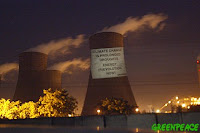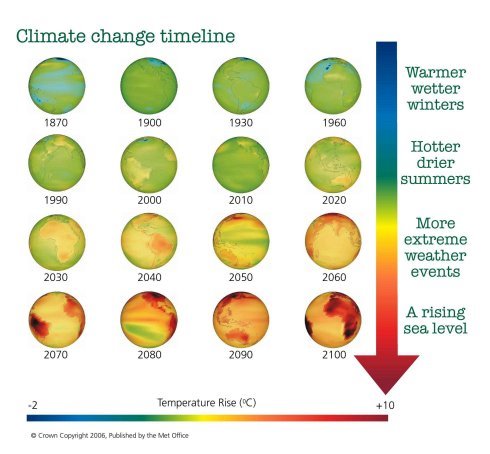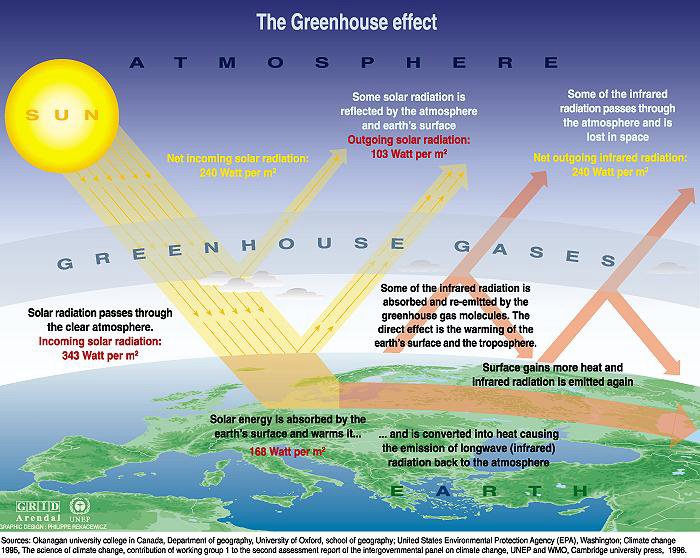Saturday, July 21, 2007
Climate Plan Passed at Toronto City Hall
This was forwared from Angela Bischoff of Greenspiration: Greenspiration
Toronto City Climate Change Plan backed
Jul 17, 2007 / Jim Byers, City Hall bureau chief, TheStar.com
One of the most ambitious climate change plans in North America has been
adopted unanimously by Toronto City Council.
About an hour after a divisive debate that saw council members defer the
issue of imposing dramatic new taxes on city residents, councillors voted
37-0 last night in favour of a plan that aims to cut greenhouse gases in
the city by 6 per cent by 2012, 30 per cent by 2020 and by a full 80 per
cent by 2050.
A report circulated earlier this year talked about banning two-stroke
motors, like those used in lawnmowers and leaf blowers, by 2010. But
councillors yesterday merely asked staff to report at a later date on the
idea, as well as on how the city could ban such machines from its own
operations such as parks maintenance and street cleaning, by 2009.
"It's an amazing vote," said deputy mayor Joe Pantalone. "We're going
beyond the Kyoto Accord targets and we're going to look at everything from
energy retrofits for buildings in the city to installing geothermal energy
at Exhibition Place."
Pantalone said the city will also promote the use of hybrid vehicles as
taxis, and create incentives for green roofs and solar power cooperatives
in neighbourhoods.
The report also talks about bringing in road tolls to increase transit
usage, but there was no vote yesterday on specific toll proposals. The
issue is likely to resurface in the coming months, but Mayor David Miller
repeatedly has said tolls would work only if the city uses the money to
build transit lines in areas not currently served by the TTC, and only if
tolls were brought in on all area highways and not simply on roads owned
by the city.
Pantalone said the vote shows how far the environmental movement has come
in Canada.
"Everyone from councillors on the right to members on the left said this
is a fight worth having," he told the Star.
Councillor Doug Holyday, a notorious penny-pincher who represents Ward 3,
Etobicoke Centre, said he voted for the city's climate change plan in part
because spending on such things as building retrofits would be recaptured
through energy savings, and because some of the money would come from
other levels of government. "It does seem ambitious to me for a group that
doesn't have much money," Holyday said of the plan.
Miller has said the city only needs to spend $1 million on the plan this
year and that $84 million could be taken from a Toronto Hydro reserve fund
to cover 2008 costs.
__________________________
Below is an excerpt from the follow-up letter to SACC's deputation to City Hall of June 18th, 2007:
Attn: Executive Committee, Toronto City Hall
Re: Climate Change, Clear Air and Sustainable Energy Action Plan for the City of Toronto, Heard at Parks and Environment Committee, June 18th
Dear Members of the Executive Committee and City Council,
. . . We would agree with many of the deputants at the June 18th hearing that the plan does not go far enough in many places (especially with regard to reducing vehicle emissions) — self-censorship in deference to the status quo is common among those given the task of drafting policies stimulated by the necessity for dramatic change. However, the plan does actually begin to address the problem through a proposal for substantial reforms, which the province and federal governments have thus far failed to do. This should be recognized and congratulated.
Emissions targets and traffic reduction
A note about the targets and about vehicle emissions is in order: A 90% (or greater) reduction in greenhouse gas emissions by 2017 in industrialized nations, rather than the proposed target of 80% reduction by 2050, is necessary to avoid the danger of a "tipping point" of a global increase of temperatures of two degrees Celsius above pre-industrial temperatures. Thus, it seems necessary to implement changes which help us achieve a 90% cut in 2030.
The fact that the governments of the U.S., Canada, and China are willfully disregarding this necessity does not remove the moral imperative and practical need for Toronto to take decisive action to protect its citizens. As Gandhi once remarked, “be the change you wish to see in the world.” The City of Toronto can lead by example.
We predict that as the negative consequences of climate change become increasingly apparent this Action Plan will be amended in future years, in response to public demand, to achieve greater reductions than 80% by 2050. However, the necessary changes are needed more now than later.
Specifically, plans to significantly reduce vehicles on Toronto's roads will have a greater impact if implemented now rather than later. We heard an excellent proposal by deputant David White on July 18th for a 25% education in traffic, with the means for achieving this to be determined by staff. Before the Action Plan goes to Council we strongly recommend that this proposal should be taken seriously and included in the City's Action Plan.
In addition to an overall reduction in vehicle traffic, we wish to advocate the following:
No-car zones
Our proposal borrows from the notion of "no car zones." There are several extremely busy streets where pedestrian traffic far exceeds vehicle traffic and where the latter impedes and is impeded by pedestrian traffic:
University of Toronto St. George campus (St. George, from Bloor to College); Chinatown along Dundas St. W. from Beverly to Spadina; Kensington Market; Bay Street and the business district downtown; Yonge Street from Bloor to Lakeshore; Queen Street West from Yonge to Gore Vale Ave; Queen Street East from Woodbine to Beech Ave; and intermittent sections of the Bloor-Dundas corridor (including the western section from Bathurst to Yonge and the eastern section around Coxwell and Pape).
Tourists already frequent these areas, and no-car zones would increase commerce and reduce smog in those areas and help the City achieve its emission reduction targets.
Of the areas mentioned, we suspect that the majority of students, residents and shopkeepers in these areas would welcome this change, especially at St. George Campus and Kensington Market, and especially in non-winter months. We respectfully request that Council ask that staff prepare a report on the feasibility of declaring these area "no car zones" (with the exception of public transit, taxis and delivery vehicles) in those areas. Increased public transit and bicycle infrastructures should accompany the changes, if implemented.
Ban short-haul flights
With the exception cruise ships and some military and industrial vehicles, airplanes are the worst vehicles in terms of greenhouse gas emissions. Short-haul flights are particularly bad because planes emit most of their carbon dioxide during landing and take off, and because the flights are short and overland (land which could easily be traveled by train or bus).
Short-haul flights for pedestrians should not be permitted within City borders. The runway on Toronto Island Airport is too short to allow planes to fly at full capacity; as a consequence, plane can only fly at maximum 30% capacity. We believe Toronto should ban short-haul flights at the Island Airport and at Pearson.
Although Porter Airlines uses relatively fuel-efficient planes, most flights are not full; this negates any benefit of fuel-efficiency. Fewer greenhouse gas emissions would result from the average number of passengers driving to Montreal or Ottawa, the destinations of most of the flights.
We respectfully suggest that Council consider ending short-haul flights within Toronto borders and ask staff to prepare a report to investigate the feasibility of doing so. This means prohibiting Jazz and Porter from operating OR imposing carbon taxes on them. Right now, their operations are expanding. This is the wrong direction to go in if the City is serious about emissions reductions.
Both measures —no-car zones and the end of short-haul flights— would have symbolic as well as practical value. They would be visible signs of the City's commitment to actually achieving its stated targets.
Emulate European examples
The main thing we wish to suggest, and which was not emphasized enough at the hearing or in the written report, was the wisdom of emulating the European model —especially as it exists in Germany, Norway, and other nations which have actively adopted environmental practices over the last thirty years. One deputy referred to photos of photovoltaic power presented by Denis Hayes (founder of Earth Day) at a recent renewable energy conference; one photo showed solar panels covering a parking lot, above the cars, serving two purposes: 1) shading the cars and reducing ground absorption of heat; and 2) generating electricity.
Another European example that could be emulated is their public campaign for reduction of energy consumption. CNN recently reported that both London and Paris turned off their lights for half an hour as part of a public education campaign designed to stimulate conservation by the populace. Road tolls are operative in London and Stockholm and should be implemented here, but if they are not then another measure to reduce inner-city traffic should be implemented.
The main point is that all the solutions exist and are currently in operation and have been for years in other cities. Toronto does not need to re-invent the wheel; it has only to consult with and follow the good example of European municipalities in order to meet its targets. This should be neither controversial nor partisan, but rather a matter of common sense.
Conclusion
There are many other ideas that the City's initiative brings to mind, from restrictions on new development that doesn't meet the requirements of "green" architecture to better enforcement of idling bylaws to the necessity for stronger regulations against pollution and a greater reduction in electricity consumption in Toronto.
The Parks and Recreation Committee heard many excellent deputations from more than fifty individuals and organizations. More public consultation would be of great benefit not only to review the plan more thoroughly and comment intelligently upon it, but also to serve as an opportunity to engage the public in the process of moving Toronto towards what theologian Thomas Berry in The Dream of the Earth calls “the ecological age.”
Interestingly, Berry identifies both universities and governments as important sectors for facilitating this change; the City’s Action Plan and our interest in it represents the beginning of a change that extends beyond the scope of one city or nation, towards a future that values biodiversity and the natural world and tries to live in harmony with it. Truly, this is the greatest challenge facing humanity at this historical juncture and we applaud the City for starting the process.
The alternative, as we should all know by now, is a bleak future of smog, heat-induced deaths, and economic and environmental devastation. The May edition of Toronto Life gave us a vision of that bleak future. Furthermore, we are increasingly made aware that the consequences of climate change are even worse than predicted by the IPCC: that it could in fact result in massive economic collapse (as suggested by the Stern report, for example) and the enormous tragedy of social disintegration caused.
As long ago as the 1992 Rio Summit, the world was informed by reliable sources that that inaction in reducing greenhouse gases could be catastrophic; we are gratified that among Canadian governments the City of Toronto is now moving in the right direction -- although there is still much ground to gain before we meet the standards of some European cities.
We are appreciative of the City's effort in bringing this plan forward. It gives us hope in world that otherwise appears hopeless, due to the intransigence of national and international governments. It is frequently stated that anthrogenic (man-made) climate change is the greatest challenge facing humanity in the 21st century.
The City's plan does appear to acknowledge the necessity for change; what is needed now, above all, is decisive progress in bringing that vision to bear. We are excited and grateful for the opportunity to be part of that process.
Sincerely, Paul York and Shayla Duval
on behalf of Students Against Climate Change
Toronto City Climate Change Plan backed
Jul 17, 2007 / Jim Byers, City Hall bureau chief, TheStar.com
One of the most ambitious climate change plans in North America has been
adopted unanimously by Toronto City Council.
About an hour after a divisive debate that saw council members defer the
issue of imposing dramatic new taxes on city residents, councillors voted
37-0 last night in favour of a plan that aims to cut greenhouse gases in
the city by 6 per cent by 2012, 30 per cent by 2020 and by a full 80 per
cent by 2050.
A report circulated earlier this year talked about banning two-stroke
motors, like those used in lawnmowers and leaf blowers, by 2010. But
councillors yesterday merely asked staff to report at a later date on the
idea, as well as on how the city could ban such machines from its own
operations such as parks maintenance and street cleaning, by 2009.
"It's an amazing vote," said deputy mayor Joe Pantalone. "We're going
beyond the Kyoto Accord targets and we're going to look at everything from
energy retrofits for buildings in the city to installing geothermal energy
at Exhibition Place."
Pantalone said the city will also promote the use of hybrid vehicles as
taxis, and create incentives for green roofs and solar power cooperatives
in neighbourhoods.
The report also talks about bringing in road tolls to increase transit
usage, but there was no vote yesterday on specific toll proposals. The
issue is likely to resurface in the coming months, but Mayor David Miller
repeatedly has said tolls would work only if the city uses the money to
build transit lines in areas not currently served by the TTC, and only if
tolls were brought in on all area highways and not simply on roads owned
by the city.
Pantalone said the vote shows how far the environmental movement has come
in Canada.
"Everyone from councillors on the right to members on the left said this
is a fight worth having," he told the Star.
Councillor Doug Holyday, a notorious penny-pincher who represents Ward 3,
Etobicoke Centre, said he voted for the city's climate change plan in part
because spending on such things as building retrofits would be recaptured
through energy savings, and because some of the money would come from
other levels of government. "It does seem ambitious to me for a group that
doesn't have much money," Holyday said of the plan.
Miller has said the city only needs to spend $1 million on the plan this
year and that $84 million could be taken from a Toronto Hydro reserve fund
to cover 2008 costs.
__________________________
Below is an excerpt from the follow-up letter to SACC's deputation to City Hall of June 18th, 2007:
Attn: Executive Committee, Toronto City Hall
Re: Climate Change, Clear Air and Sustainable Energy Action Plan for the City of Toronto, Heard at Parks and Environment Committee, June 18th
Dear Members of the Executive Committee and City Council,
. . . We would agree with many of the deputants at the June 18th hearing that the plan does not go far enough in many places (especially with regard to reducing vehicle emissions) — self-censorship in deference to the status quo is common among those given the task of drafting policies stimulated by the necessity for dramatic change. However, the plan does actually begin to address the problem through a proposal for substantial reforms, which the province and federal governments have thus far failed to do. This should be recognized and congratulated.
Emissions targets and traffic reduction
A note about the targets and about vehicle emissions is in order: A 90% (or greater) reduction in greenhouse gas emissions by 2017 in industrialized nations, rather than the proposed target of 80% reduction by 2050, is necessary to avoid the danger of a "tipping point" of a global increase of temperatures of two degrees Celsius above pre-industrial temperatures. Thus, it seems necessary to implement changes which help us achieve a 90% cut in 2030.
The fact that the governments of the U.S., Canada, and China are willfully disregarding this necessity does not remove the moral imperative and practical need for Toronto to take decisive action to protect its citizens. As Gandhi once remarked, “be the change you wish to see in the world.” The City of Toronto can lead by example.
We predict that as the negative consequences of climate change become increasingly apparent this Action Plan will be amended in future years, in response to public demand, to achieve greater reductions than 80% by 2050. However, the necessary changes are needed more now than later.
Specifically, plans to significantly reduce vehicles on Toronto's roads will have a greater impact if implemented now rather than later. We heard an excellent proposal by deputant David White on July 18th for a 25% education in traffic, with the means for achieving this to be determined by staff. Before the Action Plan goes to Council we strongly recommend that this proposal should be taken seriously and included in the City's Action Plan.
In addition to an overall reduction in vehicle traffic, we wish to advocate the following:
No-car zones
Our proposal borrows from the notion of "no car zones." There are several extremely busy streets where pedestrian traffic far exceeds vehicle traffic and where the latter impedes and is impeded by pedestrian traffic:
University of Toronto St. George campus (St. George, from Bloor to College); Chinatown along Dundas St. W. from Beverly to Spadina; Kensington Market; Bay Street and the business district downtown; Yonge Street from Bloor to Lakeshore; Queen Street West from Yonge to Gore Vale Ave; Queen Street East from Woodbine to Beech Ave; and intermittent sections of the Bloor-Dundas corridor (including the western section from Bathurst to Yonge and the eastern section around Coxwell and Pape).
Tourists already frequent these areas, and no-car zones would increase commerce and reduce smog in those areas and help the City achieve its emission reduction targets.
Of the areas mentioned, we suspect that the majority of students, residents and shopkeepers in these areas would welcome this change, especially at St. George Campus and Kensington Market, and especially in non-winter months. We respectfully request that Council ask that staff prepare a report on the feasibility of declaring these area "no car zones" (with the exception of public transit, taxis and delivery vehicles) in those areas. Increased public transit and bicycle infrastructures should accompany the changes, if implemented.
Ban short-haul flights
With the exception cruise ships and some military and industrial vehicles, airplanes are the worst vehicles in terms of greenhouse gas emissions. Short-haul flights are particularly bad because planes emit most of their carbon dioxide during landing and take off, and because the flights are short and overland (land which could easily be traveled by train or bus).
Short-haul flights for pedestrians should not be permitted within City borders. The runway on Toronto Island Airport is too short to allow planes to fly at full capacity; as a consequence, plane can only fly at maximum 30% capacity. We believe Toronto should ban short-haul flights at the Island Airport and at Pearson.
Although Porter Airlines uses relatively fuel-efficient planes, most flights are not full; this negates any benefit of fuel-efficiency. Fewer greenhouse gas emissions would result from the average number of passengers driving to Montreal or Ottawa, the destinations of most of the flights.
We respectfully suggest that Council consider ending short-haul flights within Toronto borders and ask staff to prepare a report to investigate the feasibility of doing so. This means prohibiting Jazz and Porter from operating OR imposing carbon taxes on them. Right now, their operations are expanding. This is the wrong direction to go in if the City is serious about emissions reductions.
Both measures —no-car zones and the end of short-haul flights— would have symbolic as well as practical value. They would be visible signs of the City's commitment to actually achieving its stated targets.
Emulate European examples
The main thing we wish to suggest, and which was not emphasized enough at the hearing or in the written report, was the wisdom of emulating the European model —especially as it exists in Germany, Norway, and other nations which have actively adopted environmental practices over the last thirty years. One deputy referred to photos of photovoltaic power presented by Denis Hayes (founder of Earth Day) at a recent renewable energy conference; one photo showed solar panels covering a parking lot, above the cars, serving two purposes: 1) shading the cars and reducing ground absorption of heat; and 2) generating electricity.
Another European example that could be emulated is their public campaign for reduction of energy consumption. CNN recently reported that both London and Paris turned off their lights for half an hour as part of a public education campaign designed to stimulate conservation by the populace. Road tolls are operative in London and Stockholm and should be implemented here, but if they are not then another measure to reduce inner-city traffic should be implemented.
The main point is that all the solutions exist and are currently in operation and have been for years in other cities. Toronto does not need to re-invent the wheel; it has only to consult with and follow the good example of European municipalities in order to meet its targets. This should be neither controversial nor partisan, but rather a matter of common sense.
Conclusion
There are many other ideas that the City's initiative brings to mind, from restrictions on new development that doesn't meet the requirements of "green" architecture to better enforcement of idling bylaws to the necessity for stronger regulations against pollution and a greater reduction in electricity consumption in Toronto.
The Parks and Recreation Committee heard many excellent deputations from more than fifty individuals and organizations. More public consultation would be of great benefit not only to review the plan more thoroughly and comment intelligently upon it, but also to serve as an opportunity to engage the public in the process of moving Toronto towards what theologian Thomas Berry in The Dream of the Earth calls “the ecological age.”
Interestingly, Berry identifies both universities and governments as important sectors for facilitating this change; the City’s Action Plan and our interest in it represents the beginning of a change that extends beyond the scope of one city or nation, towards a future that values biodiversity and the natural world and tries to live in harmony with it. Truly, this is the greatest challenge facing humanity at this historical juncture and we applaud the City for starting the process.
The alternative, as we should all know by now, is a bleak future of smog, heat-induced deaths, and economic and environmental devastation. The May edition of Toronto Life gave us a vision of that bleak future. Furthermore, we are increasingly made aware that the consequences of climate change are even worse than predicted by the IPCC: that it could in fact result in massive economic collapse (as suggested by the Stern report, for example) and the enormous tragedy of social disintegration caused.
As long ago as the 1992 Rio Summit, the world was informed by reliable sources that that inaction in reducing greenhouse gases could be catastrophic; we are gratified that among Canadian governments the City of Toronto is now moving in the right direction -- although there is still much ground to gain before we meet the standards of some European cities.
We are appreciative of the City's effort in bringing this plan forward. It gives us hope in world that otherwise appears hopeless, due to the intransigence of national and international governments. It is frequently stated that anthrogenic (man-made) climate change is the greatest challenge facing humanity in the 21st century.
The City's plan does appear to acknowledge the necessity for change; what is needed now, above all, is decisive progress in bringing that vision to bear. We are excited and grateful for the opportunity to be part of that process.
Sincerely, Paul York and Shayla Duval
on behalf of Students Against Climate Change
Subscribe to:
Post Comments (Atom)





















































































































































































































































.jpg)











































































































































































































































No comments:
Post a Comment